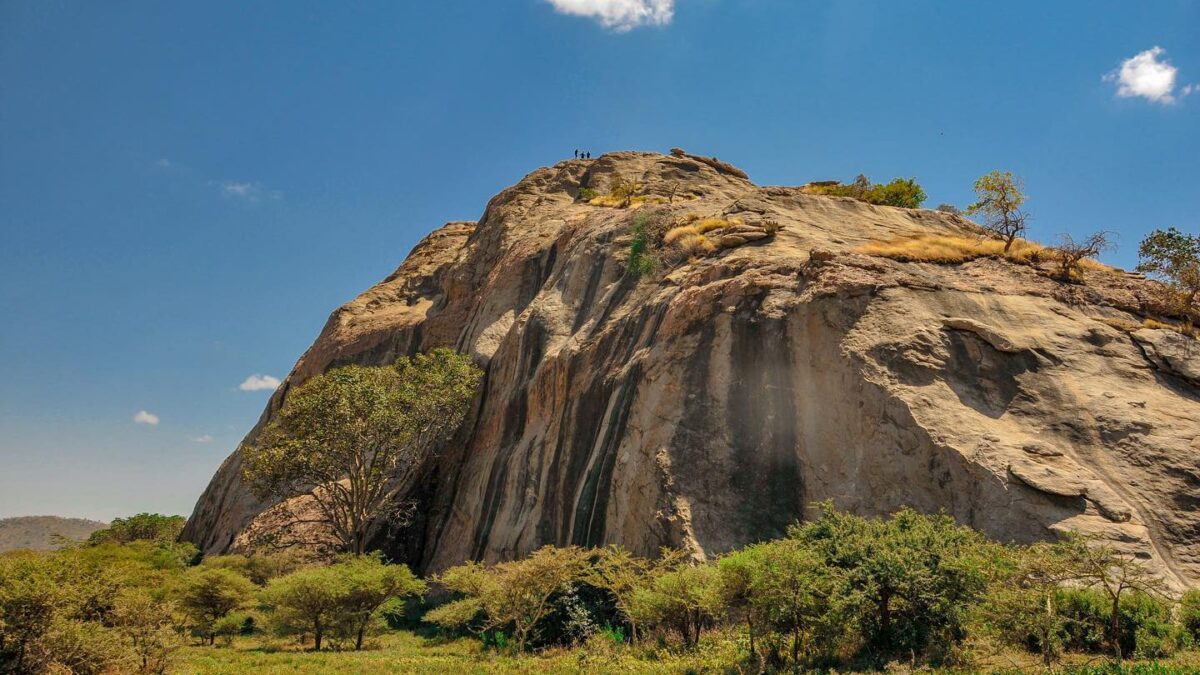Nasera Rock in Ngorongoro Crater, Tanzania

Safari in May Wildebeest Migration Pattern
December 12, 2023
Mara River in Kenya-Tanzania
December 12, 2023Nasera Rock in Ngorongoro Crater, Tanzania – Unveiling the Treasures of an Ancient Landscape on Your African Safari Holiday
Nasera Rock, nestled near the northern boundary of the Ngorongoro conservation area, stands as a testament to the rich archaeological tapestry woven into the Tanzanian landscape. This gneiss inselberg beckons travelers to explore its secrets, boasting various archaeological findings dating as far back as 30,000 years ago. Stone artifacts, characterized by the abundance of quartz and obsidian, share their silent tales alongside bone fragments and remnants of pottery. The rock canvas also showcases faint yet significant rock paintings, offering a glimpse into the ancient artistry of the region.
Exploring Nasera Rock in Ngorongoro Crater, Tanzania:
Engaging with Nasera Rock goes beyond a mere visit; it is an opportunity to immerse oneself in the wonders of time. Admire the geological marvel from its base or embark on a climb to its summit, where panoramic views of the nearby plains unfold. The chance of encountering wildlife in the vicinity adds a touch of serendipity to the experience. For enthusiasts of ancient art, spotting the faded rock paintings becomes a fascinating quest, requiring a keen eye or the guidance of rock art experts.
Ideal Time to Witness Nasera Rock in Northern Ngorongoro Crater, Tanzania:
Nasera Rock welcomes visitors throughout the year, ensuring a captivating experience in every season. However, for those seeking an extra layer of magic, December, amid the wildebeest migration, emerges as an optimal period. The vast plains surrounding Nasera Rock witness the ebb and flow of this natural spectacle. It’s a time when the landscape comes alive, offering a unique perspective on the coexistence of ancient history and the pulsating rhythm of the wild.
Location Insights – Nasera Rock in Tanzania:
Positioned near the northwestern border of the Ngorongoro conservation area, Nasera Rock deceives the senses with vast plains reminiscent of the Serengeti, located around 15 kilometers to the west. The rock shares its domain with a scattering of hills to the north and south, enhancing the picturesque setting. Refer to the map below for a comprehensive understanding of its location, providing context to the historical allure that awaits exploration.
Getting to Nasera Rock in Tanzania:
Accessing Nasera Rock primarily involves a scenic drive, approximately half an hour north from the Olduvai Gorge Museum or an hour from Naabi Hell’s Gate. The rock is well-connected within the conservation area, allowing travelers to approach from various points. Since it resides within the protected confines of the conservation area, securing permits beforehand becomes essential, contributing to the preservation of this archaeological gem.




